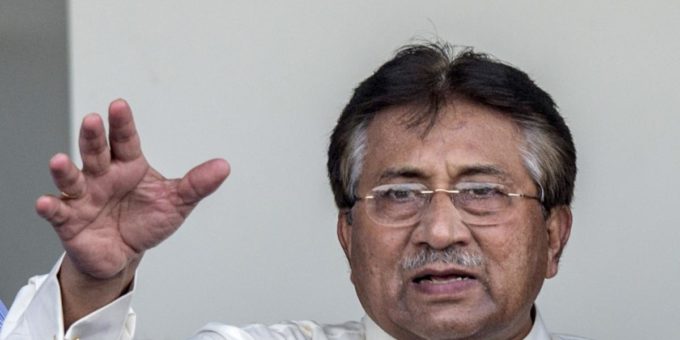
Former Pakistani dictator Pervez Musharraf was handed over the death penalty by a special court in Pakistan, which comprised of three judges, on Tuesday, December 17th 2019. The former military chief was sentenced to death by hanging by a special court headed by Peshawar High Court. The high treason trial of the former leader has been pending since December 2013 when he was booked in the case. He was indicted on March 31, 2014 and the prosecution had tabled the entire evidence before the special court in September the same year.
However, due to litigation at appellate forums, Musharraf’s trial lingered on and he left Pakistan in March 2016 “to seek medical treatment.” The former Pakistan President was then declared an absconder as he failed to appear in court despite repeated summons and the court issued a directive to the Federal Investigation Agency (FIA) to arrest him.
The High Treason Case:
Pervez Musharraf, Former Pakistani president and military chief
The high treason case was filed against the former president by the PML-N government in 2013 for clamping the state of emergency on November 3, 2007. Musharraf was booked in the high treason case in December 2013 and indicted on March 31, 2014. Courtesy to litigation at appellate forums, the trial was delayed and the former army chief was allowed by the courts as well as the interior ministry to leave Pakistan in March 2016.
Musharraf’s Rule in Pakistan:
After seizing power in a 1999 coup, he went on to survive numerous assassination attempts and found himself on the front line of the struggle between militant Islamists and the West. But by 2008, the former military head had suffered defeat at the polls and was accused of unlawfully suspending the constitution to impose emergency rule. And then, 20 years after his rise to power, he was sentenced to death in absentia after being found guilty of treason.
In early 2007 he sacked chief justice Iftikhar Muhammad Chaudhry, sparking a country-wide protest movement. Months later he reportedly ordered a bloody siege at Islamabad’s Red Mosque with its adjacent Islamic school, resulting in the deaths of more than 100 people. Clerics and students of the mosque were accused of waging an increasingly aggressive campaign to enforce a strict interpretation of Sharia law in Pakistan’s capital.
Musharraf’s Fall:
The outrage over that episode led to the creation of the Pakistani Taliban and a campaign of bombings and attacks that left thousands dead. When Nawaz Sharif returned from exile in late 2007, it marked the beginning of the end of the Musharraf era. In March 2013, he dramatically returned to Pakistan to compete in elections but it ended in humiliation and arrest. He was barred from standing and his All Pakistan Muslim League (APML) performed as badly as many had predicted.
The same year, he was accused of treason over his decision to suspend the constitution back in 2007. But the trial was never going to be easy in a country where the military has ruled on and off since independence and continues to hold great sway. So the government decided to set up a special court to try the former military leader. It took more than five years before the judges in the case handed down their shock ruling: Gen Musharraf was guilty, the three-member bench said. He was handed the death penalty.
Credit: Source link















